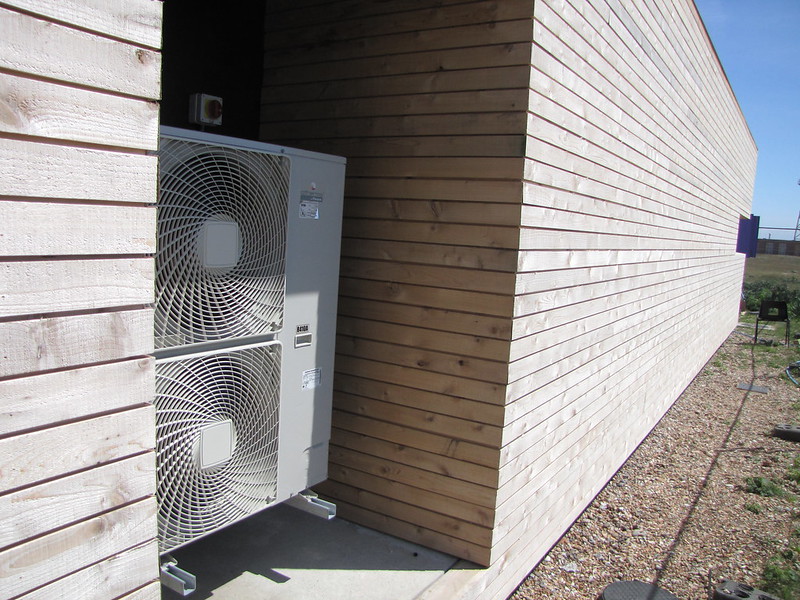Air source heat pumps can be an efficient and eco-friendly heating and cooling solution for older homes, but their performance and installation require careful consideration of the unique characteristics of the property. This comprehensive guide delves into the technical details and expert insights to help homeowners understand the feasibility and best practices for integrating air source heat pumps in old houses.
Assessing Insulation Levels
Insulation is a critical factor in the efficient operation of air source heat pumps. Older homes often have inadequate insulation, which can lead to significant energy losses and make it challenging for the heat pump to maintain the desired indoor temperature.
Evaluating Existing Insulation
To determine the insulation levels in an old house, homeowners can:
- Conduct a professional energy audit to assess the home’s thermal performance and identify areas with insufficient insulation.
- Visually inspect accessible areas, such as the attic, walls, and crawl spaces, to identify the type and thickness of existing insulation.
- Use an infrared camera to detect thermal leaks and identify areas where insulation is lacking or ineffective.
Improving Insulation
If the existing insulation is found to be inadequate, homeowners should consider upgrading it to improve the home’s thermal efficiency. This may involve:
- Adding blown-in or batt insulation to the attic, walls, and crawl spaces.
- Sealing air leaks around windows, doors, and other penetrations using caulk, weatherstripping, or spray foam.
- Upgrading to high-performance windows and doors to reduce heat transfer.
- Considering the use of insulating materials, such as rigid foam boards or structural insulated panels (SIPs), for major renovations or additions.
Addressing Heating and Cooling Loads
The heating and cooling loads of an old house can be more complex due to factors like insulation levels, window types, and ductwork. Properly assessing these loads is crucial for selecting the right-sized air source heat pump and ensuring its efficient operation.
Calculating Heating and Cooling Loads
To determine the heating and cooling loads, homeowners can:
- Hire a professional HVAC contractor to perform a detailed load calculation using industry-standard methods, such as the Manual J or ACCA Residential Load Calculation.
- Utilize online load calculation tools, but be aware that these may not account for the unique characteristics of an older home.
- Consider factors like the home’s square footage, number of occupants, insulation levels, window types, and air infiltration rates.
Addressing Ductwork and Air Distribution
In older homes, the existing ductwork may be undersized, leaky, or inefficient, which can impact the air source heat pump’s performance. Homeowners should consider:
- Inspecting the ductwork for any leaks, damage, or inadequate sizing and addressing these issues.
- Upgrading the ductwork to improve air distribution and ensure proper airflow throughout the home.
- Exploring alternative air distribution systems, such as mini-split or ductless heat pumps, if the existing ductwork is not suitable for retrofit.
Selecting the Appropriate Air Source Heat Pump
When choosing an air source heat pump for an old house, homeowners should consider factors such as heating and cooling capacity, efficiency ratings, and compatibility with the home’s electrical and ductwork systems.
Capacity and Efficiency Ratings
- Ensure the heat pump’s capacity is properly sized for the home’s heating and cooling loads, as determined in the previous step.
- Look for high-efficiency models with a Seasonal Energy Efficiency Ratio (SEER) of 16 or higher and a Heating Seasonal Performance Factor (HSPF) of 8.5 or higher.
- Consider variable-speed or multi-stage heat pumps, which can better adapt to the varying loads in an older home.
Electrical and Ductwork Compatibility
- Verify that the home’s electrical service and wiring can accommodate the power requirements of the selected heat pump.
- Ensure the existing ductwork, if present, is compatible with the heat pump’s air handling capabilities and can be properly integrated.
- Explore alternative air distribution systems, such as mini-splits or ductless heat pumps, if the existing ductwork is not suitable for retrofit.
Installation and Commissioning
Proper installation and commissioning of the air source heat pump are crucial for its optimal performance and longevity in an old house.
Site Preparation and Installation
- Ensure the outdoor unit is placed on a level, stable surface and protected from environmental factors, such as snow, wind, and direct sunlight.
- Carefully route the refrigerant lines and electrical connections between the indoor and outdoor units, following manufacturer guidelines.
- Integrate the heat pump with the home’s existing ductwork or alternative air distribution system, ensuring proper airflow and sealing any leaks.
Commissioning and Ongoing Maintenance
- Hire a licensed HVAC contractor to perform a thorough commissioning process, including refrigerant charge verification, airflow measurements, and system performance testing.
- Establish a regular maintenance schedule, including filter changes, coil cleaning, and system inspections, to ensure the heat pump continues to operate efficiently.
- Monitor the system’s performance and address any issues promptly to maintain optimal energy efficiency and comfort levels.
By carefully considering the unique characteristics of an old house and following best practices for air source heat pump installation and maintenance, homeowners can successfully integrate this energy-efficient heating and cooling solution while preserving the charm and character of their historic property.

